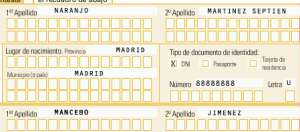
INEbase / Demography and Population / Population Figures and Demographic Censuses / Population and Housing Census 2001
|
Population and Housing Censuses 2001 Censuses 2001 Almost all the countries in the world periodically carry out a Population Census that gathers information on the sociodemographic characteristics of the whole of the population resident in the country. In Spain, Population and Housing Censuses are carried out every ten years, as established by law. The main objective is to determine the number of inhabitants, dwellings and buildings there are in the State and its different geographic and administrative areas, and obtain a description of the structure of the country from different points of view to enable the compilation and assessment of policies on demography, health, education, assistance, environment, etc. The creation of the 2001 Population and Housing Censuses, commissioned to the National Statistics Institute, is an extremely complex operation that has involved over 40,000 persons, who have visited 21 million postal addresses for three months to garner information on buildings, occupied dwellings and the persons resident within. Approximately 13 million households have been visited and information has been garnered on some 40 million persons. The budget for the Census amounts to 27 thousand million pesetas, with the most important budget item being the expenses for the personnel hired for the Census (amounting to 70% of the total sum).
In order to offer the results in the shortest period of time, the latest computer techniques are being implemented to process the census questionnaires: digitalisation via high speed scanners (capable of reading more than one DIN A4 per second), optic recognition even of handwritten characters, video-correction with support from dictionaries and validation rules, etc. All people registered in the same dwelling they inhabited were able to complete the Census using the Internet Spain is the first country in the world to offer this possibility. |


 This is the first time
This is the first time